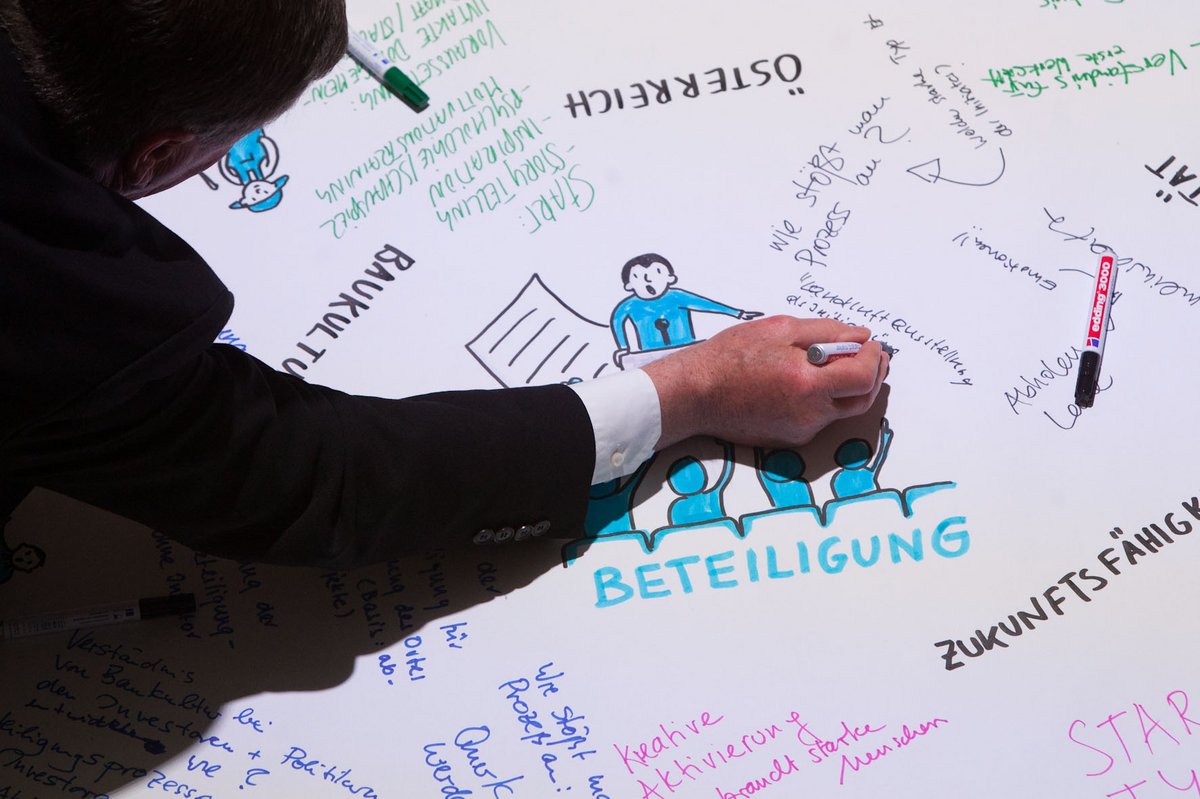Recommendations for Action
Conclusion
 © Till Budde für die Bundesstiftung Baukultur
© Till Budde für die Bundesstiftung Baukultur
The Baukultur Report, with its recommendations for action, is aimed at all those involved in planning and building, so as to remedy deficits and make optimal use of recognised potentials. Besides general recommendations for action, in particular the public sector – that is, the federal government, states, and municipalities –, private building owners, and the housing and real estate industry as well as professional chambers and associations are addressed. The Federal Foundation of Baukultur and the various Baukultur initiatives are also charged with resolutely expanding the network and, in so doing, strengthening Baukultur.
Vital Municipalities – Improving the Quality of Life in Rural Areas with Baukultur
A vital municipality has a vibrant town centre, in which people live and businesses are at home. The centre has a de ning overall appearance of the locality and offers quality of stay in public areas for all generations. In this sense, Baukultur forms the key framework for improved quality of life and attractiveness in rural areas. Baukultur can be the impetus and result of a place’s self-assurance and revitalisation and of a shared local identity. This has a positive impact on the provision of public services and on the development of business and tourism in a municipality.
Strengthen and revitalise the town centre!
The future of rural areas – particularly shrinking municipalities – depends on con centration and densification, which create the structural preconditions for a financially affordable infrastructure and provide points of contact for local community life.
Mix the village!
Utilisation is the key to avoiding vacancy and wasteland. It is therefore important, especially in the town centre, to develop and operate new, mixed, and tailored concepts – with the active participation of private owners, initiatives, and merchants.
Strengthen the townscape with Baukultur!
Sitespecific buildings strengthen identity. Contextually sensitive additions and the consideration of local/regional building styles, materials, and forms in new buildings and renovations are the preconditions for this.
Infrastructure and Landscape – Active Design of Landscape Change in the Balance of Interests
The cultivated landscape in Germany will change dramatically in coming years due to climate change, energy production, infrastructure expansion, and new uses. It offers space for agriculture as well as the structures for transport and the energy transition. It is a place of residence and recreation, a place of nature and biodiversity. Only through the active design of diverse usages of residential areas and landscape in the balance of interests and through innovative, multifunctional mobility concepts can the unique urban-rural relationship of our cultivated area be secured in the long term – also in times of climate change.
Design and plan infrastructure and landscape according to location!
The consequences of climate change and the energy transition, as well as the development of infrastructure, should be treated as active design tasks.
Think and plan interdisicplinarily!
Only in integrated teams with the strong involvement of engineering and design competence can technical and infrastructural interventions be creatively qualified.
Create new living and recreational areas through conversion!
The conversion of abandoned agricultural buildings, of structural or scenic brown fields, or of mining areas, landfills, and treatment plants is a key means of regional appreciation.
Planning Culture and Process Quality – Improved Quality of the Built Living Environment through Better Planning
The added value from Baukultur for securing and strengthening local or regional identity is increasingly being recognised. Planning culture and process quality are decisive for the generation of this socially and economically relevant added value in both growing and shrinking regions. An open process and a wise and structured “Phase Zero” integrate external expertise and local experience. They reduce poten- tial barriers – creating the basis for trusting cooperation between stakeholders – and lead to better solutions with generally less nancial effort. Especially for smaller municipalities with limited resources and clear, less complex structures, interagency cooperation and the integration of all participants are already frequently used practices and in the future the only way, in every respect.
Strengthen expertise, collaborate, and learn from each other!
Baukultur is an integral part of community development. Competent administration and policy use this potential. In smaller towns and municipalities, Baukultur also has to be a “top priority”.
Pursue an active land policy!
An active and activating land policy strengthens public accountability and empowers municipalities .
Take innovative approaches to planning and participation!
Lively formats in participation and communication strengthen the identification with the locality and improve the planning results. Formal planning should be combined with informal instruments of participation.
Here you can download a free copy of the Baukultur Report 2016/17.
